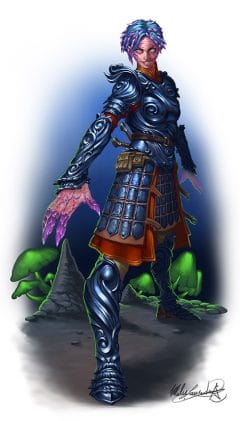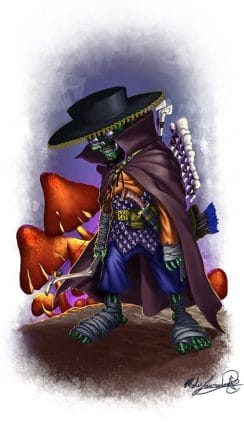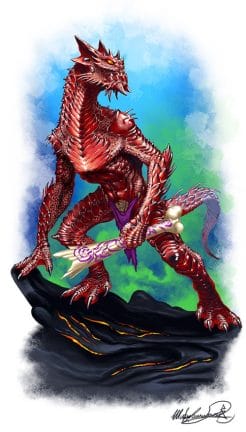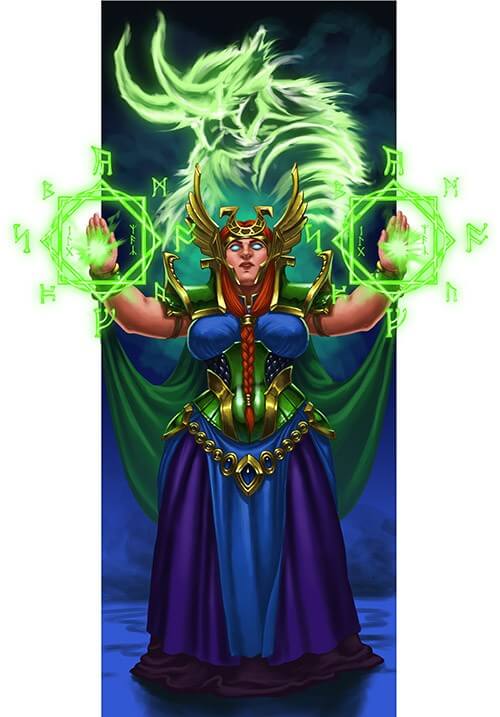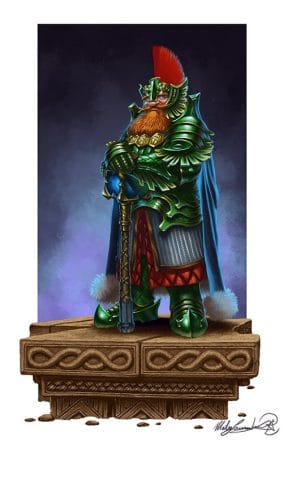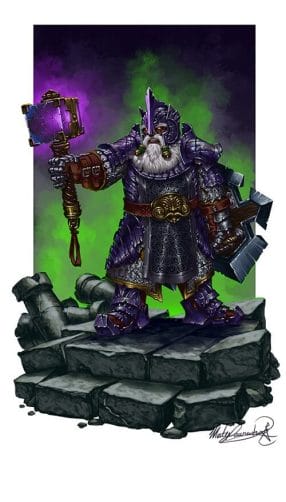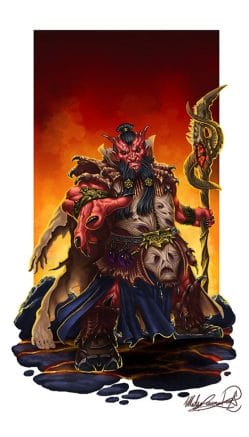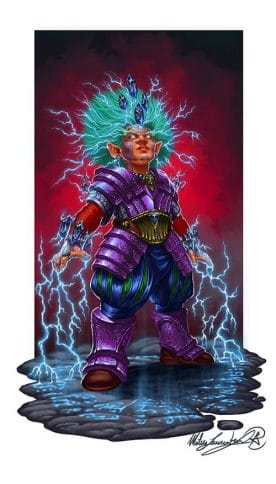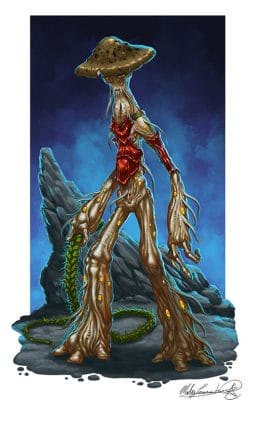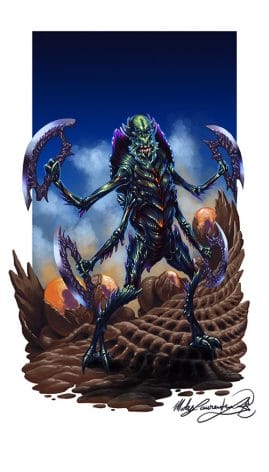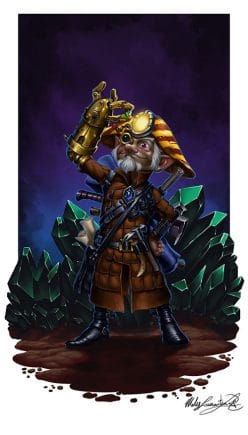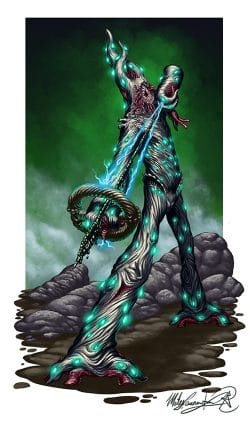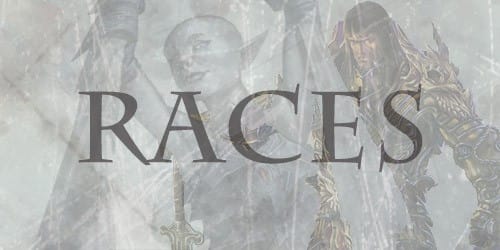
Upperworld Races
 Elf
Elf
Elves in human lands are generally considered spies, and looked upon with great suspicion. Players choosing to run an elf character must have a foolproof disguise and method of escape at all times.
Elves occasionally travel through human lands, but rarely stay for an extended period of time. A hero may be the exception to the rule, but will never let other races know the secrets of their homeland. Elves live for thousands of years and have an inner-wisdom of the natural world that humans will never attain. They are aloof and secretive and generally keep to themselves. The majority of elves live within the protective confines of the Silent Forest to the south of the Klavek Kingdom. The Silent Forest is a magical place where humans are forbidden, and those who have ventured into the forest never return. An elf cannot willingly give up the secrets of her homeland even if tortured, magically manipulated, or even psionically attacked. Most elves choose either the path of magic or nature and given the seemingly endless life they are gifted, excel marvelously in either.
 Gnome
Gnome
Pradjna is the only country on the continent which contains a large population of gnomes. Pradjnan gnomes are studious, inventive, and are responsible for almost every technological advancement on the main continent including the newest and most promising invention: Steam Power. The ancestors of the Pradjna gnomes originally hailed from another continent although none who live here now have any record of their past nor connection to their mysterious and distant homeland.
Recent advancements in steam power research have inspired the construction of steam-powered trains, a transportation device which the gnomes have begun testing within the confines of Pradjna.
 Halfling
Halfling
The twin disasters of the Great Schism and Hoyrall Wars decimated the halfling population in Aventyr. Large portions of their island home of Picollo far to the southeast remain uninhabited. Enclaves of exiles across the breadth and width of Aventyr have exposed many nations and races to the existence of halflings, but many isolated folks often perceive them as children or humans of stunted growth.
Halflings bear scant trust for the other races of Aventyr, especially humans, whom they view as feckless and faithless. Halflings from exiled backgrounds are more likely to be trusting of non-halflings and tend to hold more true to the ancient ways and happy-go-lucky traditions of halfling society. Those whose families suffered during the Hoyrall Wars and enslavement are more prone to pragmatism. This practical outlook has begun to erode the traditional paths of fellowship and community. Though fragile, a bond does still remain between all halflings; it is taboo for one halfling to kill another even under dire circumstances; those that do face banishment. When banding together in groups halflings are a force to be reckoned with.
 Half-Elf
Half-Elf
Half-elves are the rarest of all races and distrusted even more than Half-Orcs. Elves and humans have long led distinctly different lives in separate parts of the world. Although it is extremely rare for an elf to leave the sanctity of the Silent Forest, it is even rarer for an elf to find love with a human. Typically a half-elf is born when an elf adventurer finds a human companion who can match their demanding intellect and worldly knowledge. In some cases, an elf is kidnapped while in Klavek lands where a human male has his way with her before she escapes to return to the Silent Forest. Bringing human blood into the Silent Forest is forbidden, thus the half-elf baby is banished once born and adopted by human parents willing to take on such a burden.
Half-elves usually live out their lives in solitude never knowing where they belong. Most hide their heritage or live in dangerous places where people rarely go, preferring life as a hermit over the stresses of living in villages or cities.
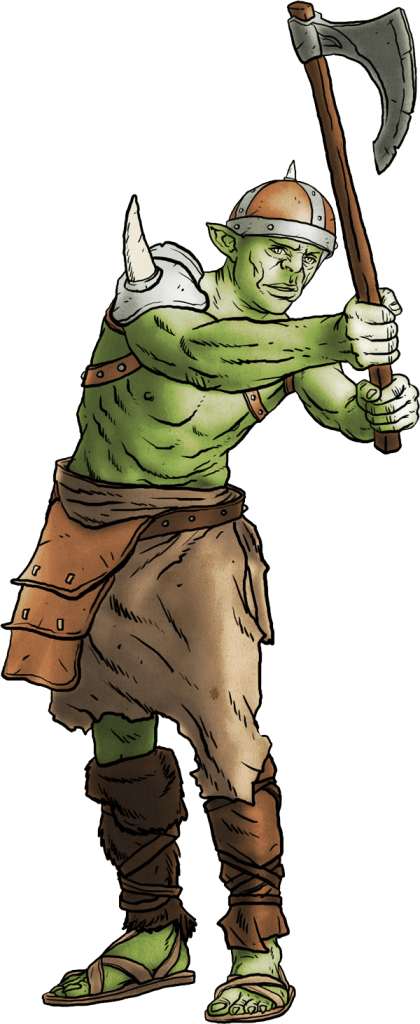
Half-Orc
Half-Orcs are the result of orc raids on remote Klavekian settlements and looked upon with mistrust and disgust. Generally, a widow raises her half-orc offspring in the harsh wilderness outside of town. Because of this most half-orcs tend to flounder awkwardly in social situations yet prosper in a harsh wilderness environment.
Human (regional)
Baevonian & Chonian
Baevonian
 Typical alignments LE, LN, LG
Typical alignments LE, LN, LG
Common Backgrounds Acolyte, Soldier, Variant Criminal: Spy (within the context of the law)
Basic Appearance Black hair cut short and covered by helm, dark eyes heavy with ages of war. A muscular and heavily-scarred body covered in finely made, heavy plate armor from head to toe, holding an ancient family blade in one hand, a shield with Baevonian crest in the other.
The mountain stronghold dwelling Baevonians, laden with heavy armor and weapons, protected by stone and steel, guard the lands of former Chonia with their lives, holding back the forces of chaos and the tide of darkness that would otherwise wash over the known land.
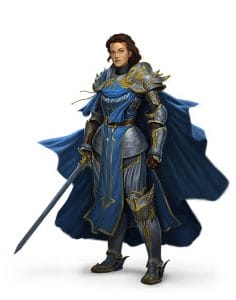
Driven by a passion for lawfulness, the Baevonians seek order in all things, no matter the cost. Known to forge questionable alliances and dark deals just to hold their position in the world, forcing order upon others is not just expected, but required.
Punishment for breaking the law in Baevonian society is more than just what the local magistrate may deal out as a sentence, the guilty individual will be shunned from society to such an extent they typically commit ceremonial ritualistic suicide to appease the Axiomatic General or willingly take a position in the front lines in any major assault, hoping to either prove themselves or die trying.
Chonian
 Typical alignments NG, CG, N
Typical alignments NG, CG, N
Common Backgrounds Folk Hero, Hermit, Outlander
Basic Appearance Tan skin, brown and black hair worn long, almond eyes, toned muscles, wearing leather clothing and carrying hides on horseback yet also dressed with enough fineries to allude to ancient roots in civilization.
The horse-riding Chonians have long been nomadic warrior-archers, traveling from one place to another due to the dangerous and chaotic nature of the world in which they live. Many times, the Chonians have settled between the mountains and Lake Chonia, even giving these lands their name, but time and time again, the Baevonians marched down from their mountain strongholds to wage war and destroy everything the Chonians had built up over the years.
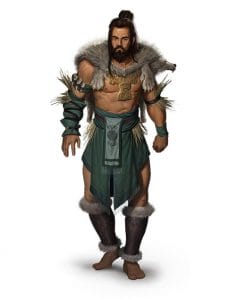 If attacks and war with Baevonia weren’t enough, the Chonians have the orcs to contend with, not just a few, or even a few hundred, but thousands of orcs which stream like rivers of bloodshed from the mountains and envelope the land in a cacophony of bent blades, rusty axes, and heads of enemies on pikes.
If attacks and war with Baevonia weren’t enough, the Chonians have the orcs to contend with, not just a few, or even a few hundred, but thousands of orcs which stream like rivers of bloodshed from the mountains and envelope the land in a cacophony of bent blades, rusty axes, and heads of enemies on pikes.
The Chonians only wish is to create permanent settlements for their people so they might practice the natural way of plains life like their tribal ancestors once did.
Unfortunately, some of the Chonian people would rather ride their mounts off into the dusty sunset, raiding and pillaging Baevonian traders and anyone who might have something of value or something to eat. These “bad seeds” frequently draw the attention of the Baevonian military which marches down out of the mountains to crush anyone responsible or harboring these criminals.
Klavekian & Vikmordere
The Klavekians & Vikmordere share a common ancestor yet neither populace is aware of this fact due to hundreds of years of manipulation by the powerful Klavek Kingdom Monarchy. The Klavekians are similar to Tsarist Russians and the Vikmordere are similar to the Viking raiders & northern Native Americans of our world. Both are unique and evolved independently of one another.
 Klavekian
Klavekian
Klavekians are a hearty steadfast people who have been dealt with impossible odds and found ways to cope. The climate in the Klavek Homeland is sub-arctic most of the year and in some places, all year round. Over thousands of years, the weak have died out while the strong have prospered, leaving a people able to withstand cold temperatures and sometimes go for days at a time without food or water. Although wilderness travel is rarer for those living in big cities, all Klavekians at one time or another must make overland journeys at which point they experience what it truly means to be Klavekian. The Klavek Kingdom retains a massive military presence which dominates the known world. The boundaries of the Klavek Kingdom stretch from the northern tip of the continent all the way south to the edge of the Silent Forest. Every single Klavek citizen is required to train in the use of a sword, women included.
Klavekians are extremely paranoid people and in most cases fear that which they do not understand.
A good real-world equivalent of the Klavek Kingdom is Tsarist Russia.
 Vikmordere
Vikmordere
The Vikmordere are a mash-up of Native Americans and Vikings (from our world) with a culture deeply seeded in nature and reverence of the “Ancestor Spirit”.
The Vikmordere live in a pseudo-country of the same name, located deep in the Vikmordere Valley and surrounded by steep, snow-covered mountains. The inside of the valley contains the world’s largest glacial lake named Serpent Lake. Serpent Lake meanders for hundreds of miles before emptying out into the Serpent Tail River and the country known as the Klavek Kingdom.
Vikmordere are skilled raiders, warriors, rangers, druids, and shipbuilders. There are many different tribes located within the valley, all of which vie for power from time to time.
A good real-world historical equivalent of Vikmordere is the Viking’s North American settlements made possible by Leif Erikson, the famous Norse explorer.
 Brief History: After the Vikmordere launched numerous routine raids on Klavekian villages, King Tokolvor Klavek XIII ordered troops into the mountains to oust the Vikmordere from their own land. The Vikmordere had been using Rybalka, a village of tribal fishermen and woodworkers as a base of operations for their attacks on the three Riverside Klavekian villages. The village of Rybalka also works a local iron mine which supplied ore for the Vikmordere weapons and shipbuilding tools.
Brief History: After the Vikmordere launched numerous routine raids on Klavekian villages, King Tokolvor Klavek XIII ordered troops into the mountains to oust the Vikmordere from their own land. The Vikmordere had been using Rybalka, a village of tribal fishermen and woodworkers as a base of operations for their attacks on the three Riverside Klavekian villages. The village of Rybalka also works a local iron mine which supplied ore for the Vikmordere weapons and shipbuilding tools.
The Klavek Kingdom Monarchy moved troops into the Vikmordere Valley and launched an arduous assault against the Vikmordere in hopes of securing this strategic location and obtaining the lucrative iron mine. After many failed attempts and the death of hundreds of Klavekian ground troops, the Klavek Kingdom was finally able to oust the Vikmordere raiders and take over the small village and local mine. In order to hold the location, additional troops were brought in to clear the mountainside forests of the rest of the Vikmordere warriors which resulted in horrible casualties for the Klavekians. Eventually, almost every Vikmordere in a 15-mile radius was slaughtered. A few Vikmordere survived by hiding in abandoned ruins and mountain caves, which were passed up by the Klavek Kingdom soldiers seeing as it was impossible to follow every possible lead in such a large territory.
The majority of the Vikmordere people still thrive in the mountains and in the deep recesses of the winding Serpent Lake, waiting for the day when a great Vikmordere champion rises up to lead them to victory and reclamation of their ancestor’s land and the village now called “Rybalka” by the filthy Klavs.
Underworld Races
Purchase Underworld Races & Classes for 5th Edition or Pathfinder RPG
 Ahool
Ahool
These are the children of the dreaded, winged, nightmare beasts of the Underworld, the ahool. Compared to their elders they are considerably smaller and less of a threat, but denizens of the depths would find reason to disagree. The demanding life of ahool society irons out the failings and weaknesses of these youthful creatures quickly, but when one is led too far astray or abandoned by their tribe, they pursue whatever path life provides for them (sometimes never reaching their full primal potential). Small collectives of ahooling are said to live outside the incredibly fierce societies of the predatorial ahool, eschewing the bestial traditions of their greater cousins.
 Colliatur
Colliatur
“We are the radiant, we are the eternal. We are the scourge of the undead, the salvation of the meek and downtrodden. By our light you shall know us. By our gleaming skin, our radiant stride. We bring deliverance and an end to the unliving threat that plagues your lands. Some call us the Shining Ones, others the Luminaires or Luxites” still more name us Krystallerne, Eðalsteinn or Gimsteinnmenn—we prefer Colliatur. Choose freely for we judge you not, for we are your salvation.”
Colliatur are Aventyrians that drank from waters carrying a pathogen designed by one of the world’s first masters of magic, Udødelig, released through Underworld streams and to the surface above. These microorganisms cannot completely stop the advance of the alien biology’s invasion of a host body, but they do prevent them from becoming completely sublimated to the otherworldly entity’s will. The limited time available to the undead wizard prevented wide dispersal of the anti-colloid virus, leaving the extraterrestrial sentience puzzled by how any creature can resist its psyche (there is a 1% chance that a PC has been exposed to this otherwise benign virus and is immune to the detrimental effects of the colloid). Colliatur are often found leading the subjects of the colloid—their independence proving to be an attracting force to the alien’s thralls—and may be encountered anywhere in the Underworld or Upperworld.
 Dødelig
Dødelig
These small stone skeletons caper about the Underworld, living immortal lives of abandon and casual investigation wherever they go. The only known locale that dødelig are sure to be found is the corpse of the Dracoprime—a mountainous subterranean expanse made from the draconic idol’s dead body, buried far below the surface of Aventyr. The only things they take seriously are the uncovering of more of their kin and avoiding the colloid, an alien entity intent on the destruction of all undead.
 Draaki
Draaki
The draaki were once a proud race of enchanted beings that ruled over the Underworld without peer, taming even the great dragons. Their entire species, however, came to a calamitous end and were transformed in a disastrous series of events that took them from the heights of power to the depths of negligence, their civilizations gone and their peoples reduced to a nomadic existence in the endless caves of Aventyr. The draaki’s strong resemblance to their former slaves grants them formidable abilities, but also marks them to other Underworlders as the failed race, considered weak and ripe for abuse.
Drow
 The drow were once denizens of Upperworld, sharing the realm with their elven brethren without consequence. Thousands of years have passed since those mythical times, and the children of the Spider Goddess have evolved far from their original state. The drow (now barely considered a subtype of the elven race) live far beneath the surface of known lands, deep in the Underworld. Their large cities are built in reverence to Naraneus the Spider Goddess, who intimately assists them, unlike the deities of Upperworld. Drow societies are matriarchal, and women generally hold every position of power within a city, their priesthoods always led by women of potent ability and foresight.
The drow were once denizens of Upperworld, sharing the realm with their elven brethren without consequence. Thousands of years have passed since those mythical times, and the children of the Spider Goddess have evolved far from their original state. The drow (now barely considered a subtype of the elven race) live far beneath the surface of known lands, deep in the Underworld. Their large cities are built in reverence to Naraneus the Spider Goddess, who intimately assists them, unlike the deities of Upperworld. Drow societies are matriarchal, and women generally hold every position of power within a city, their priesthoods always led by women of potent ability and foresight.
Drow are typically cold, cunning, and manipulative; most live for the sole purpose of obtaining absolute power and control over those around them. Their entire race is inherently evil but there are rare occasions—when the moon is full and the Spider Goddess’ attentions are devoted elsewhere—that a good-aligned dark elf is born. Children born during these periods are generally sacrificed to Naranaeus without a second thought, but mothers with a strong parental instinct give birth in secret, outside of their drow settlement, passing the child to an Upperworlder or asking an Underworlder of another race to care for the newborn. They may follow their offspring, secretly assisting from afar to see that their child grows and adapts to life amongst the other races.
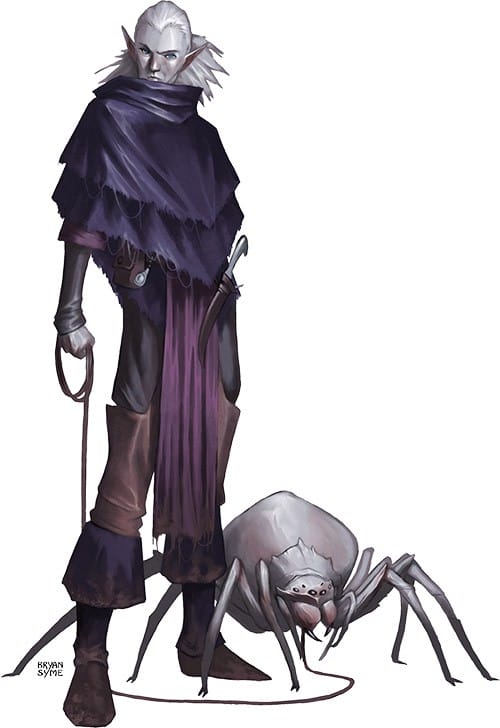 Most drow characters hail from the subterranean metropolises of the Underworld.
Most drow characters hail from the subterranean metropolises of the Underworld.
Female Drow
Raised to rule, dark elven women have deft tongues and cunning wits but lack the grace and natural instincts of their ancestral counterparts on the surface.
Male Drow
Dark elven society subjugates males, reducing their roles into defenders of their settlements and little else. They are trained from birth to hone their keen senses, agility and ability to remain unseen and unheard, but their lack of social commitments leave them less able to maneuver in conversation as their female counterparts.
 Dwarf
Dwarf
Dwarves differ greatly depending upon their ancestral lineage, these subtypes of Dwarf are known to exist: Dweorg, Dvergr, Zwerc and Gitwerc. The following is the story the dwarves tell when asked how they were brought into being.
FORGING OF THE DVERGR
In the days of darkness when the world was young, the gods forged a race from the very heart of the world itself.
They called this race “Dvergr” and placed them close to the heart of Motherworld.
The Dvergr thrived and prospered, but as time went on they became greedy, fighting over the precious metals and gems of the Motherworld.
The gods foresaw the destruction of the Dvergr at their own hands, thus they divided the race into five parts, each sharing the appearance of the first Dvergr (but only a fragment of its whole).
The first were named dweorg, and were created from the Dvergr’s hands and heart giving them honor and expert craftsmanship.
The second were made from the Dvergr’s head, and kept its most proud of names. They stayed deep beneath the world toiling in their greatest cities, only an echo of their former selves.
The third were named the zwerc, created from the spirits of the Dvergr. This granted them innate power over magic, their mystical nature making them loners and travelers with an endless thirst for knowledge.
The potent avarice of the Dvergr, however, would not be undone by the gods—traveling far from the deific crafting, the very essence of their greed delved deep into Aventyr, much deeper than the gods had permitted the Dvergr to go. Soon they had discovered HEL—where devils and demons dwell—and while the first three races were created, a pact was forged with the denizens there. The devils granted the Dvergr’s avarice physical form and realms in the deepest, most foul and flaming depths of the Underworld—but they did not stop there. The devils gave the gitwerc the ability to siphon souls from the other races to feed themselves, and in turn they granted the gitwerc more power.
When the gods returned to forge the fourth, they found the Dvergr’s entrails snatched up by devils who had turned them into a terrible creature, the gitwerc.
The gods, realizing their mistake in creating a race with no evil intent, vowed never to do so again and went to work creating the fifth race in secret, using all the remaining parts of the Dvergr. The fifth and final race would be eloquent, honorable, knowledgeable, and nearly immortal, yet the race would be forever divided, torn between light and darkness. Their souls were permanently bound to the world, sentenced with a nearly endless life staring out upon the sea of eternity, never able to attain that balance which comes so easy to the other races. The gods placed this race above and below the world, both in light and in darkness; they became the elves and the drow.
Then the gods did something which surprised all of the races. They created a realm between Upperworld and the Underworld, using the culminating thoughts of all the new races to forge the “Gift from the Gods”, the first humans: Askr and Embla.
This gift would bring balance to the world.
 Dweorg
Dweorg
Dweorg are the most common dwarven subtype, denizens of the Underworld that enjoy mining and blacksmithing. While rare outside of the Underworld, Upperworlders are often accepting of these stout folk—the legends tell that the first two humans, Askr and Embla, were themselves forged by the ancient dweorg. This belief has warmed even the cold hearts of the Klavekians, who freely accept these dwarves into their villages and homes. Although they are friendly with Upperworlders, the dweorg tend to keep to themselves and rarely allow outsiders to travel into their realm.
 Dvergr
Dvergr
Dvergr are subterranean dwarves that spend most of their time building massive cities and sealing off passages to the surface. They are isolationists that seek little or no contact with peoples outside of the Underworld; preserving a rich cultural heritage unspoiled by Upperworlders is a dvergr’s way of life.
 Gitwerc
Gitwerc
These kings of the Underworld live in the deepest, darkest caves far, far below the surface of Aventyr. Surrounded by hot, bubbling lava and sulfur vents, their rule near the depths of HEL is undisputed. Little to nothing is known of these rare dwarves, and those that dare travel to their lands rarely return. Spoken of in only legend, the gitwerc are rumored to have dark dealings with devils, using souls as currency. Living so close to HEL, they are foul creatures one and all, turned fiendish by their infernal associations. They are both feared and hated by all of their dwarven kin, and many Upperworlders are quick to immediately brand them devils. They are sneaking, scheming creatures and while nearly all of them are evil, it is well known that when they forge a pact they will uphold it (although these are rarely with anyone other than dark and powerful beings).
 Zwerc
Zwerc
Long ago these mystical dwarves coped with the dangers of the Underworld by steeping themselves in the understanding of magic. While the dvergr withdrew as a peoples, the zwerc did so as individuals, hiding themselves deep below Aventyr as their studies of the arcane and divine progressed. The few enclaves that survived have developed into truly magical beings able to focus their supernatural energies to devastating effect. Zwerc are shunned by other dwarves, seen as aloof intellectual superiors by both their kin and themselves. They have always been nomads in Upperworld, and are persecuted by their dwarven brethren throughout the Underworld.
 Funglet
Funglet
These are the children of the mushroom jungles of the Underworld. They are true children of nature, embracing the fungal forests they call home as though each individual capped stalk growing in the subterranean soil were a cousin or sibling. Philosophers have come to believe that they are the sentient expression of lush Underworld forests, literally made for and by the mushrooms themselves. While they are predominantly loners, a small society of funglets have gathered in Dregharka’s Bayou, a fungal jungle bordering the Forever Deep.
 Hoyrall
Hoyrall
Hoyrall are parasitic insectile-humanoids that burst from the skull of the Dracoprime, killing the monstrosity instantly and heralding the Great Schism. They are savages that, if one is even willing to consider interacting with them kindly, seem vicious and barbaric in their alien ways. They live within the Woven Warrens and other honeycombed regions in the Underworld, series of tunnels that they rule over with virtually no dissent.
 Kraidyl
Kraidyl
There have always been beasts that lurk in the wet caverns and murky waters of the Underworld, primordial hunters and things that exude the very essence of mortality. Many reached their ideal forms long ago, perfectly adapted to hunt in the darkness of the endless caves before even the Forging of the Dvergr. After the titanic Dracoprime’s fall during the Great Schism, however, an entire race of animalistic scions of death began to prowl the Underworld, striking fear into even the hearts of the dark elves and devil dwarves: the fearsome kraidyl.
 Svirfneblin
Svirfneblin
Undergnomes, most commonly known as svirfneblin, are greatly misunderstood by the other races of Aventyr, just as their ancestors were once ostracized by their kin on the surface. Still, they maintain the same tight-knit sense of familial duty. While they dabble in mining, the svirfneblin are as adept at engineering as regular gnomes and have even learned how to incorporate arcane magics into their clockwork creations. Their undeniable talent with mechanical devices, however, makes them extremely ambitious in their designs, often leading to disastrous consequences.
 Vestraadi
Vestraadi
Vestraadi are a strange race of man-like aberrations that rule over the Forever Deep of the Underworld. Their lack of any visual senses is easily compensated by their retinue of tactile, auditory and olfactory organs, but it is their bizarre appearance that makes them so reviled and hated among the few Upperworlders that have seen them. They are only now traveling across Aventyr, though none are sure why, and the mysterious nature of the vestraadi does nothing to encourage them to find out.

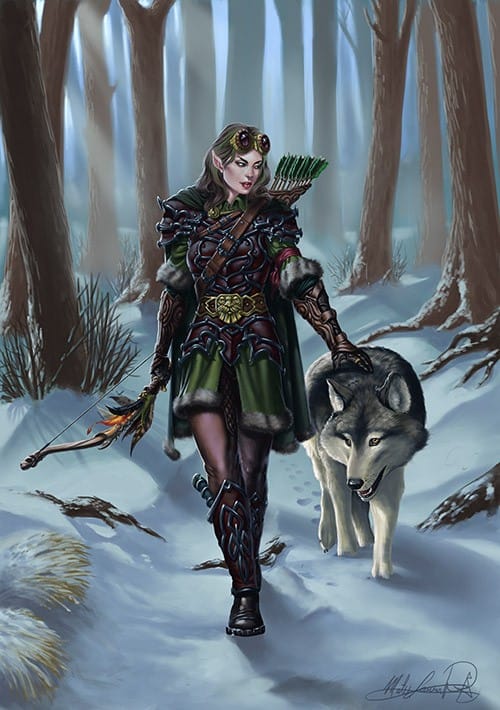

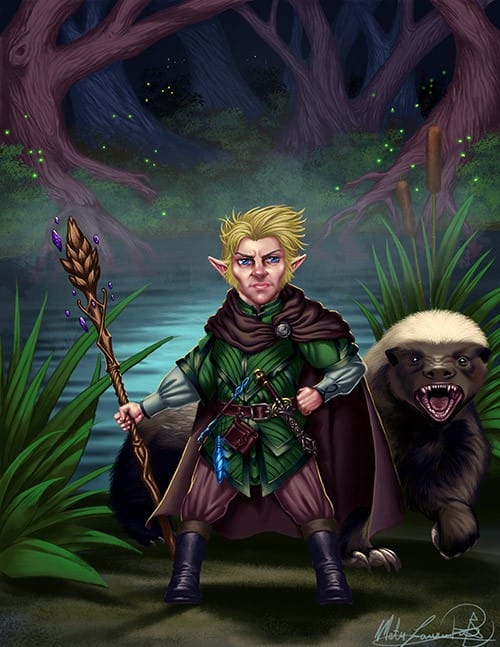
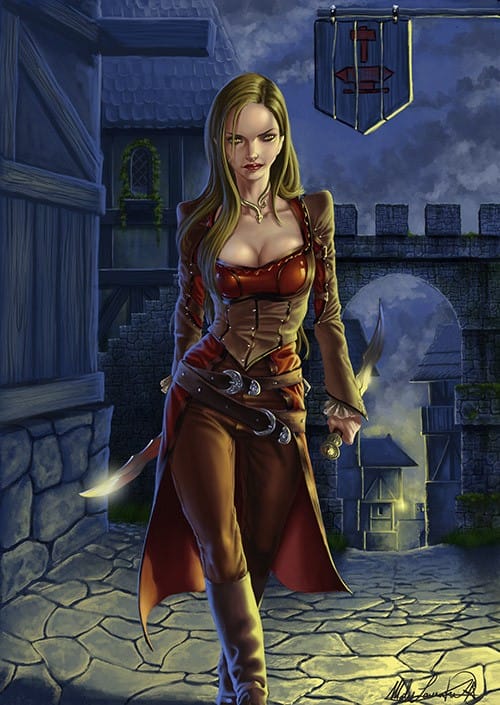
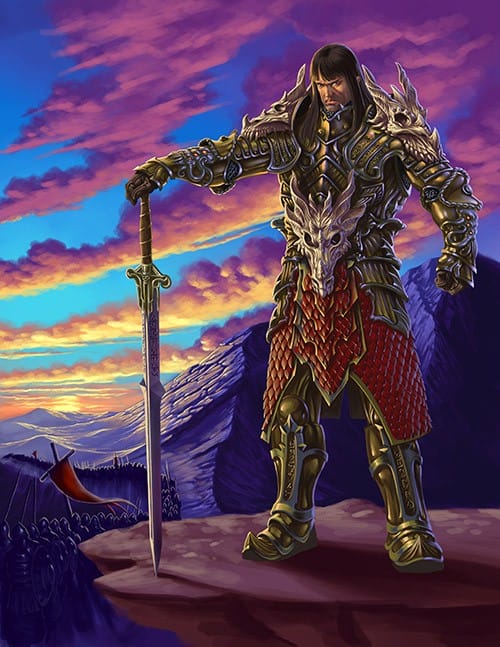
 Vikmordere
Vikmordere
